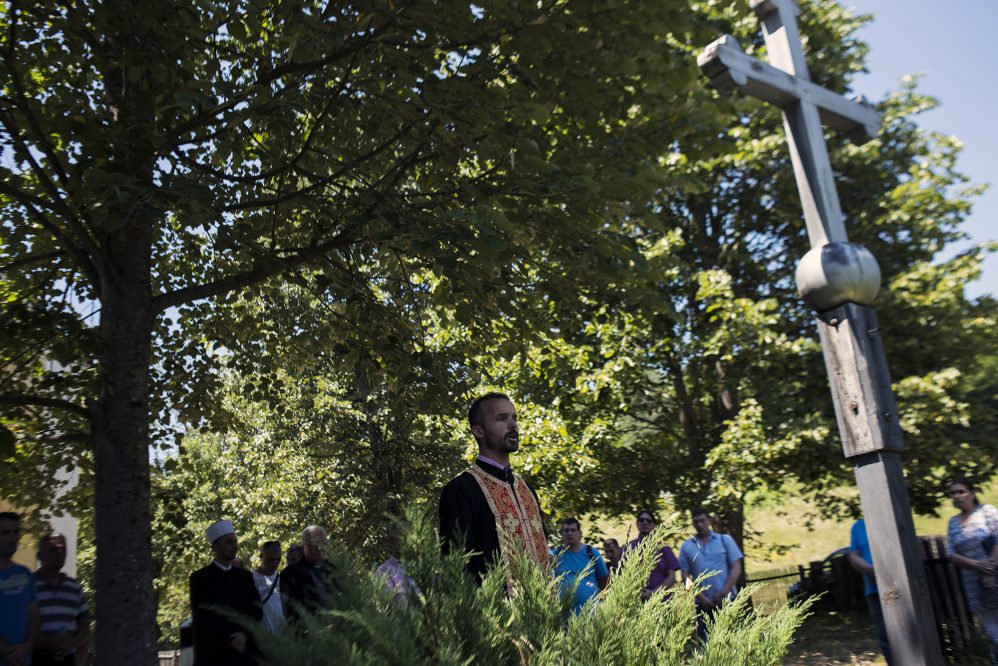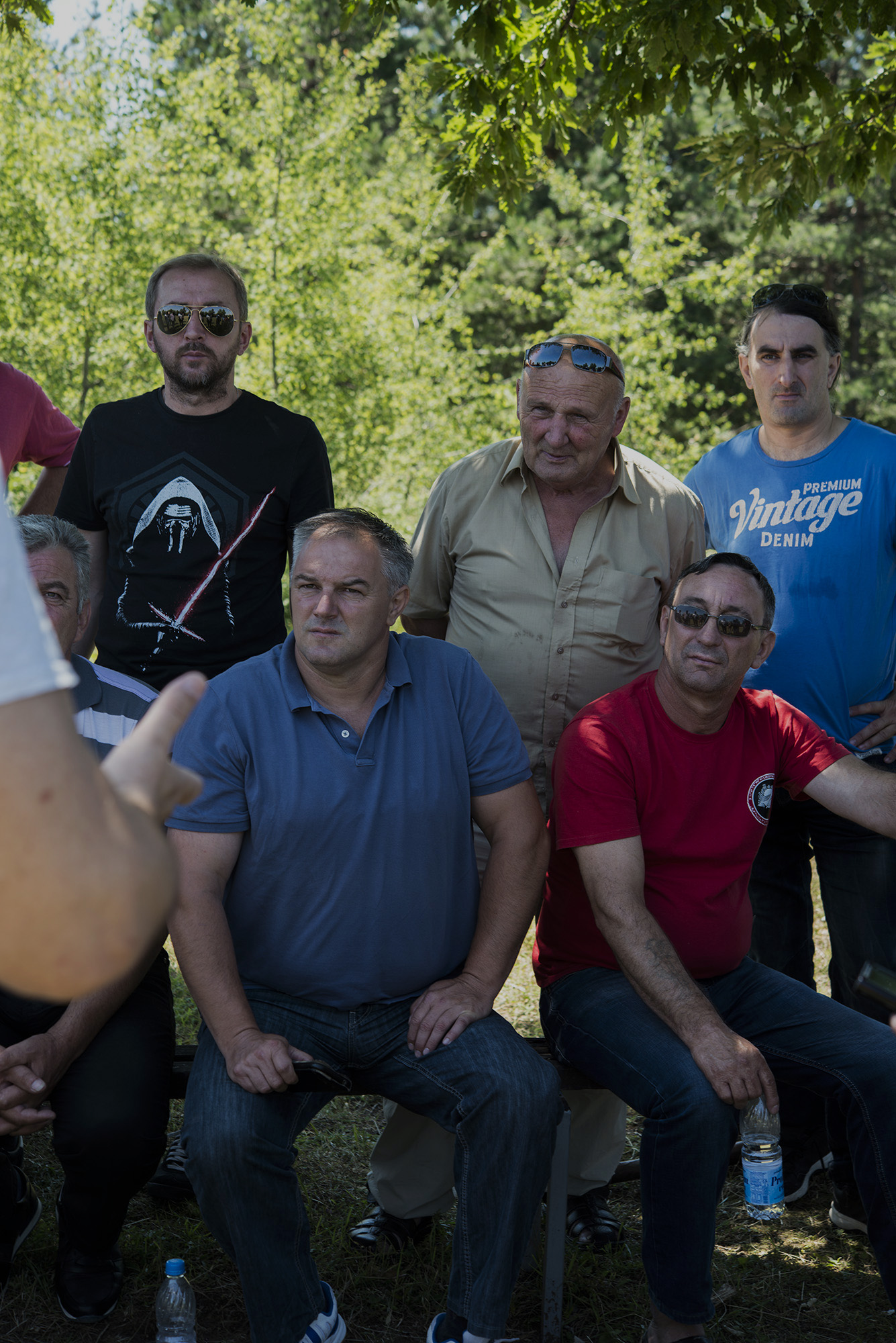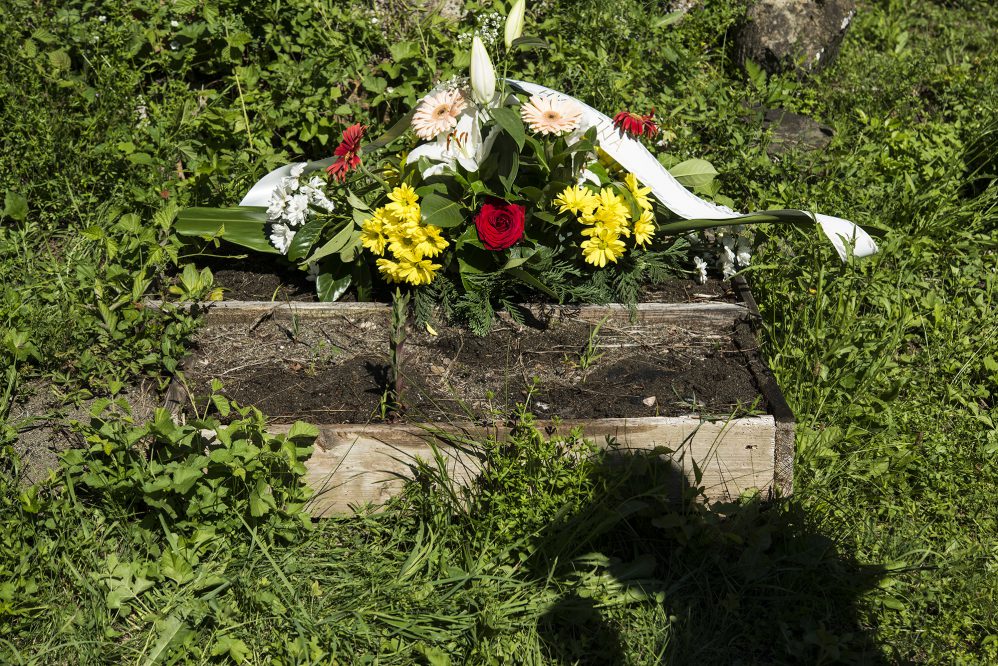I know how it was for me, but I want to know what it was like for those I fought against in the war. If we just sit in our own pen, then we will only know the truth we want to hear.
War veterans from Bosnia and Herzegovina, Serbia and Croatia visited the former Vozuća battleground in the Zavidovići Municipality, paying their respects to the civilian and military casualties, wishing to hear, as one of the participants, Enes Bajrić, put it, what it was like for others on this battleground that took the lives of more than a thousand soldiers and hundreds of civilians from all three sides involved in the conflict (Army of BiH, VRS, HVO).
The idea of a joint visit by veterans of the Army of BiH, VRS, HVO, VJ, HV and JNA resulted from years-long cooperation with veterans’ associations from Zavidovići and Doboj. Our hosts and co-organisers of the visit were veterans of the Army of BiH, Asim Parlić, Amir Mujkić and Enes Bajrić, a VRS veteran and president of the Zavidovići Homeland Association in Doboj, and Nenad Bukvić from the Doboj Veterans Organisation of Republika Srpska. The Centre for Nonviolent Action Sarajevo/Belgrade had already organised visits by war veterans to Zavidovići and Doboj, where we gathered this time as well to set off for our visit of the Vozuća battleground.
Why another visit by war veterans to the Vozuća battleground, if we have already been there, seen it, heard the stories? This time, we wanted to go a step further: we wanted to visit the Vozuća battleground, one of the bloodiest in the past war in BiH, together with veterans from Zavidovići and Doboj, with former soldiers that directly participated in the battles in this area, together with those who were on front-lines where the trenches were just a few meters away from each other. We made this step forward on 6 July 2017, thanks to our hosts in Zavidovići and Doboj, and the war veterans we have been working with for years now.

We gathered in Doboj on 5 July 2017. The choice of what was once a major railway junction in the former Yugoslavia was not accidental – after the autumn of 1995, most of the residents of Vozuća were expelled from Zavidovići with the majority settling in Doboj. The people of Vozuća living in Doboj have not forgotten their home, they are organised into homeland associations, the visit Vozuća, they have rebuilt the monuments, churches, and they commemorate events from 1995 that they term the exodus.
Death Hills
Our first destination on 6 July was Site 715. Located on the Podsijelovo Hilll at the foot of Mount Ozren in the Zavidovići Municipality, Site 715 may well be called the “Death Hill”. Some 20 kilometres from the centre of Zavidovići, Site 715 was of great military strategic importance, and the plain of Site 715 was the scene of conflict between the Army of BiH and VRS during 1994 and 1995. In an area of scarcely a few hundred square meters, more than 300 soldiers from both sides were killed over the course of just a few months. Apart from the number of casualties, the intensity of the combat on such a small area is also testified to by the remark that this site was supposed to be called Site 714, as at least one meter of terrain was “ploughed up” by combat operations.
We heard about the battles at Site 715 from veterans of the Army of BiH and of VRS whose trenches in this area were only some 15 meters apart. Today, there is a monument at Site 715 without national or religious symbols, with only an inscription that reads: To those whose blood soaked this site. The people and fighters of Zavidovići. Although we do not know whether this was the intention of those that built the monument, this inscription allows for the commemoration of victims here, whatever side they were on.
There is also an idea for the meadow – whose every inch, according to the veterans, is soaked in blood – to be returned to the state it was in immediately after combat in order to testify to the horrors of war. Amir Mujkić, a disabled war veterans of the Army of BiH, spoke about the possibility to construct such a monument: I hope that a future generation will muster the strength to build such a monument as a warning about the agony wrought by war. I would have liked our generation to erect that monument, the generation of people who fought here, to serve as a signpost for the generations to come.
An appeal was also voiced from Site 715 to individuals and institutions to do more on finding the missing – over 100 soldiers and civilians that went missing on this battleground have still not been found – and to prosecute those responsible for war crimes. The bravest lost their lives at this site, but the veterans that had come to pay their respects to the fallen that day were also brave. We sent an appeal from the site to individuals and institutions to help find the missing soldiers and civilians. They deserve a human end, a dignified burial, and that is perhaps the most important appeal of today’s visit, said Ninko Đurić, a former member of VRS, after the visit to Site 715.
After Site 715, we visited the village of Stog, where a monument was erected in the courtyard of the Church of St George to commemorate 21 victims whose remains were found in a mass grave in the same locality. There is also a memorial plaque commemorating members of VRS who were killed or went missing in this area in September 1995. They laying of flowers and a moment of prayer and silence was observed to honour the victims and condemn the crimes committed here, and we were joined by the religious leaders from Zavidovići: Izet ef. Čamdžić, Head Imam of the Zavidovići Majlis, the parish priest of the Serbian Orthodox Church, Zoran Živković and the parish priest of the Catholic Church, Miro Bešlić. The presence of local religious leaders is a new development we believe to be noteworthy – religious communities have significant influence and are one of the main pillars of (national) narratives about the past war.
People: An Irreplaceable Loss
The Zavidovići battleground was active practically from the beginning to the end of war combat in BiH, i.e. from mid-1992 to the autumn of 1995. As part of our visit to Zavidovići, we paid our respects and laid flowers at the Central Town Monument in Zavidovići commemorating 977 fighters of the Army of RBiH and 138 civilian war victims killed in the territory of the Zavidovići Municipality. “The monument shaped like a broken wing symbolises the great human losses that cannot be undone.” The memorial plaque in the yard of the Church of St Joseph in Zavidovići commemorates the HVO defenders who lost their lives in this area and we laid flowers and paid our respects there too.
At the site of the “13th kilometer” along the Gostović river by Zavidovići, a detention facility was set up in 1995 for captured Serb civilians and soldiers. The facility was run by the El-Mudžahid unit made up of foreign fighters. The prisoners were subjected to abuse, beatings and killings. By laying flowers at this location, we called for this site of suffering to be marked.
The local authorities from Zavidovići and Doboj, represented by Mayor Hašim Mujanović and Chairman of the Zavidovići Municipal Council Redžo Seferović, as well as the Mayor of Doboj, Obren Petrović, joined us for a working lunch in Kamenica, welcoming all the participants and expressing their support for our actions.
If not us, who else?
It takes courage to bring former enemies to sites of their own suffering or accompany them there. We are therefore greatly indebted to this pushing of the bar – a joint visit of war veterans that had directly fought each other – to our hosts, veterans of the Army of BiH and of VRS. A few months ago, we saw religious leaders from BiH visit sites of suffering in Kazani, Križančevo selo and Korićanske stijene. The gesture of religious leaders from Zavidovići seems even greater: they went to pay their respect to victims from all sides in the community where they live and work, in a place where people recognise them and often see them as important authorities. The support of local officials is certainly important because they are often in a position to decide what will be commemorated and how in their area.
This visit to the former Vozuća battleground showed us how many small steps need to be made for such an endeavour. Humanising the enemy and the need to hear their truth is a long-term process. Previous visits to Zavidovići and Doboj, spending time and cooperating with war veterans from this area, connecting former enemies are just some of those steps.
The fact is that we have casualties on all sides, missing, wounded, demobilised soldiers and unemployed veterans… Therefore, if we don’t start an initiative like this, who else will?, said Enes Bajrić, a veteran of the Army of BiH. This goes to show that veterans are prepared not just to fight for a better position in society, but also for a better society.
Photographs from the visit can be viewed here.

